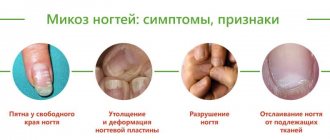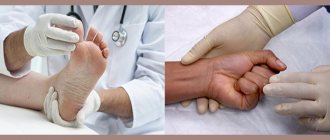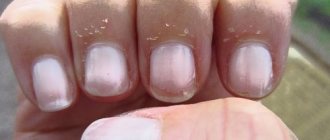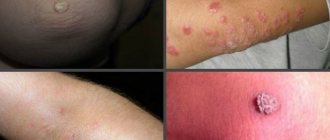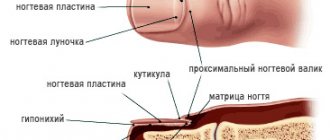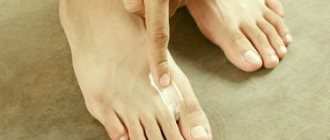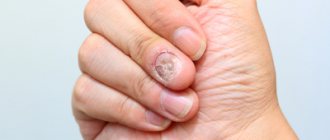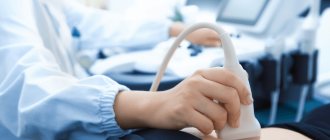Before treating the fungus, a nail cleaning procedure with onycholysis . Hardware cleaning is very popular due to its advantages:
- Safety for skin and nails (the nail plate is not injured, the skin is not damaged, even with severe fungus it is possible to save the nail);
- Quick removal of damaged tissue;
- Short recovery period;
- Instant improvement in the appearance of the nail;
- No side effects;
- High efficiency and elimination of unpleasant symptoms of fungus;
- Possibility to take tissues for analysis.
*Cleaning nails for the treatment of onychomycosis allows you to effectively fight the fungus and prevent relapses of the disease.
Why do you need to remove the nail plate?
Onychomycosis is infection of the nails by parasitic fungi. Pathogenic flora destroys the horny plate, as indicated by:
- cloudiness;
- White spots;
- swelling of the periungual fold;
- redness of the nail bed;
- thickening;
- breaking off the free edge;
- deformation.
Untimely destruction of the fungus is fraught with a change in the shape of the plate, deepening the free edge into the skin. In 8 out of 10 cases, patients seek help for advanced onychomycosis and bacterial complications.
Removing a fungal toenail is an effective way to get rid of the infection. After removing the plates, the doctor prescribes antifungal ointments and solutions for treating the subungual space. Radical treatment of onychomycosis is indicated for:
- inflammation of the periungual and subungual spaces;
- fungal infection of more than 70% of the stratum corneum of the finger;
- severe deformation of the plates;
- frequent relapses of onychomycosis;
- infection of the growth zone.
Complete removal of the nail plate is dangerous due to complications - bacterial infection, suppuration. In 2/3 of cases, they are limited to removing only the top layer or part of the nail.
Pathogens
Onychomycosis is caused by microorganisms from the kingdom of Fungi. The world of mushrooms is diverse, and not all of them are as pleasant as champignons, chanterelles or honey mushrooms, which we are used to seeing on our table. There are microscopic parasitic species that feed on the tissues of plants, animals, and humans.
The causative agents of onychomycosis consume the protein keratin, which is part of the nail plate, hair, and the upper (keratinized) layer of skin. About 50 representatives of parasitic fungi are known that can cause the disease.
They are divided into three groups:
- Dermatophytes. They account for 80% of onychomycosis cases. They are characterized by high survival and viability. Found naturally in soil;
- Yeast-like mushrooms. Among them is Candida albicans (microorganisms of the genus Candida), known to women, which causes thrush or vaginal candidiasis. Yeast-like fungi are 5 times more likely to affect fingernails than toenails. Toxic and impair the functioning of the entire body;
- Mold fungi. Onychomycosis caused by molds is rare. But it is the most dangerous, it progresses quickly, it can completely destroy the nail plate and spread to neighboring tissues.
Onychomycosis affects the fingernails and toenails, but toenail fungus is much more common on the feet. This is due to the fact that hands are given much more attention, washed more often during the day, and treated with antiseptics. They are always open and well ventilated except in winter when we wear gloves. And your feet are constantly covered with street shoes, house slippers, tights, socks, and they sweat more. These factors create ideal conditions for the development of foot fungus, because heat and moisture are its best “friends.”
The causative agent of onychomycosis penetrates the nail from different directions. The most common way is from above, from the side of the free edge of the nail plate. It is also possible to introduce it from the side from the side ridges or from below from the cuticle and nail growth zone.
Onychomycosis is most dangerous near the cuticle. In this case, the fungus slows down or stops the division of onychoblasts - cells of the growth zone under the lower nail fold. The nail stops growing in length, and the infected areas may not recover. A pathological change in the structure and destruction of the nail occurs.
Fungi rarely penetrate directly into the nail plate. First, their spores enter the skin around the nail or the spaces between the fingers through microcracks, cuts, abrasions, abrasions, and calluses. Then the colony begins to grow, the pathogen moves towards the nail plate, penetrates it and begins to parasitize.
Preparing for removal
There are several ways to remove horny plates affected by the fungus. To make the procedure less painful, they undergo a preliminary preparation stage:
- Steaming. The first step is to steam your foot in a hot bath. To do this, use a chamomile decoction or a solution of laundry soap and baking soda. The procedure is performed for at least 25-30 minutes.
- Removing the top layer. The softened parts are cleaned off with nail scissors, a nail file or a scraper for better penetration of pharmaceutical products into the lesions.
- Skin protection. Most drugs for removing horny plates contain aggressive additives. Therefore, before applying them, the periungual fold is covered with an adhesive plaster.
After preparation, softening agents are applied to nails with fungus.
How to remove a nail affected by fungus using pharmaceutical products
Therapy of onychomycosis is carried out with special drugs, most of which have a complex effect:
- antifungal;
- antiseptic;
- keratolytic;
- softening.
Removal of nails affected by fungus is carried out with softening varnishes, ointments or plasters. In 80% of cases, damaged parts can be removed in 2-3 procedures.
Before applying the drug, all areas affected by the fungus are treated with antiseptics - Chlorhexidine, Miramistin, Furacilin solution.
Plasters
A patch is a nail remover that softens the stratum corneum on the fingers. Facilitates the removal of layers infected with fungus. Most patches contain:
- keratolytics – trichloroacetic and salicylic acids, urea;
- antiseptics – miramistin, ammonia, chlorhexidine;
- antimycotics – bifonazole, miconazole, ketoconazole.
When treating fungus, the following keratolytic plasters are used:
- Mycospor is a patch with a pronounced antifungal and keratolytic effect;
- Onychoplast is a patch with urea, paraffin and beeswax, which additionally disinfects the skin in affected areas;
- Ureaplast is a urea-based product that softens nails and destroys fungal spores;
- Fungiplast is a drug with a fungicidal and softening effect that makes it easier to remove part of the infected nail.
To remove all layers of fungus, it is recommended to apply for at least 5 days.
Lucky
Products in the form of varnishes act similarly to keratolytic patches. They are applied in several layers after steaming the hands or feet. Most varnishes contain fungicidal components. Therefore, they treat not only the areas infected with the fungus, but the entire surface of the horny plate. Periodically, the softened layers are cleaned off with nail scissors, a file, or a milling cutter.
To remove the nail plate with nail fungus, the following are prescribed:
- Batrafen;
- Mikozan;
- Loceril.
Keratolytic varnishes should not be confused with varnishes designed to kill fungus.
The former soften the horny covering of the fingers, and the latter destroy the fungal infection. Compared to other forms of keratolytic agents, varnishes are easier to apply. Before the procedure, the periungual fold is not covered with adhesive tape or treated with fatty creams. The risk of getting a chemical burn when using varnish is minimal.
Ointments
With advanced onychomycosis, the deep layers of the nail are affected. To defeat the infection, all layers of the plate are removed down to the affected area. Ointments and creams have better penetrating ability.
To remove nails use:
- Loceryl is a cream with amorolfine and urea, which is intended for the gentle removal of nails with fungus;
- Nogtivit is a product with urea and essential oils that has disinfecting and keratolytic properties;
- Nogtimycin - cream for removing nails for fungus with keratolytic and fungicidal activity;
- Mycospor is an ointment with bifonazole and urea, which is intended for non-surgical nail removal.
When treating affected areas with keratolytic ointments, the following recommendations should be followed:
- the product is applied to the lesions in a thin layer once a day;
- the treated areas are sealed with adhesive tape;
- the dressing is changed every 24 hours;
- between changing bandages, steam your legs or arms;
- the exfoliating parts of the horny cover are removed with a scraper;
- After the procedure, the nails are covered with a layer of ointment.
Therapy is carried out for at least 2 weeks in a row. When the subungual space acquires a smooth structure, this indicates the destruction of the fungus.
Features of the treatment of onychomycosis
Advertising on TV promises to easily and quickly cure nail fungus with the help of antifungal (fungicidal) creams, solutions, and varnishes. We are promised that “The drugs Lamesil, Exaderil, Mikazan, Mecoderil and others penetrate deeply into the structure of the nail, effectively destroy the fungus, and return the nails to their previous appearance in 2-3 applications.” But why then does such self-treatment of toenail fungus give good results in a maximum of 10% of cases? Because these remedies themselves are effective only in the early stages of the fungus, when the symptoms are not yet obvious and almost invisible.
Manufacturers often lie by saying that the drugs are produced in Europe and contain good active ingredients. In practice, the most effective against nail fungus (onychomycosis) is Clotrimazole (Climbazole). Most drugs are simply very well advertised and cost 2000-5000 rubles, but do not contain Clotrimazole (Climbazole). You cannot buy specialized drugs in regular pharmacies, for 100-1000 rubles, even if it says Clotrimazole (Climbazole), it will not be in the chemical composition since production is very expensive.
This drug is used in podiatry centers and on properly prepared nails. We do not have the right to write the name of the drug, but you can ask us any question here.
Antifungal drugs are the mainstay of treatment for onychomycosis. Without them, no matter how much we would like to, we will not be able to defeat the infection. But they must be used correctly and thoughtfully. Medicine for nail fungus should be applied to a previously treated and prepared nail so that it has the desired therapeutic effect.
The first thing you should do if you suspect onychomycosis is to consult a doctor who will confirm or refute the diagnosis. If necessary, he will prescribe additional examination and treatment. Choosing a remedy for nail fungus based on reviews from the Internet, advice from friends, or advertising on TV will result in wasted time and money spent on unnecessary drugs. The same results will be obtained when trying to treat onychomycosis with traditional methods. Vinegar, garlic, onions, and medicinal herbs are not able to destroy the pathogen.
An important point in the treatment of onychomycosis is the disinfection of shoes and clothing that have been in contact with the infected area. If you do not do this, you can become infected again from your own things. Clothes must be washed at high temperatures (above 60 °C), ironed, and shoes must be treated with special disinfectants.
Removing nails at home: folk recipes
To remove toenails, products with keratolytic, alkalizing and antimycotic properties are used. They create conditions unfavorable for fungal growth.
With vinegar
Vinegar softens the stratum corneum and prevents fungal infections in the subungual space. To completely cure onychomycosis, treatment is carried out for at least a week. Removing a nail with fungus is done with the following means:
- 1 chicken egg mixed with 3 tbsp. l. vinegar;
- add 3 drops of thyme essential oil;
- leave in a dark place until the yolk is completely dissolved.
The product is applied to infected nails twice a day. The softened layers are cleaned off with a scraper.
With dimethyl phthalate
Dimethyl phthalate has fungicidal and softening properties. To remove the affected nail, you need:
- mix 1 tbsp. l. dimethyl phthalate with chicken egg;
- add 5 ml of vegetable oil;
- apply the prepared mixture to the areas affected by the fungus;
- Wrap your feet in plastic and put on warm socks.
The treatment is carried out 4-5 days before bedtime. The softened layers of the nail are cleaned with a scraper immediately after waking up.
With tar
Tar prevents the proliferation of most pathogens of onychomycosis - yeast and mold fungi, dermatophytes. Toenail removal on the big toe is carried out as follows:
- 30 minutes before bedtime, apply tar to the affected area;
- the foot is wrapped in plastic film;
- warm your feet with woolen socks;
- after waking up, the remaining tar is washed off with water;
- The softened layers are removed with scissors.
The procedure is performed until the layer with white spots is completely cleaned off.
To avoid re-propagation of fungi, antimycotic ointments are applied to the affected area for 3-7 days.
With soda
Soda baths are a painless and effective way to combat fungus. With severe symptoms of onychomycosis, the legs float daily for at least 1.5-2 weeks. To cure a nail with fungus, you should:
- dissolve 2.5 tbsp in 2 liters of boiled water. l soda;
- add 3 tbsp. l. tar soap shavings;
- immerse your feet in the solution for a quarter of an hour;
- remove the peeling parts of the plates with a scraper.
If the nail bed becomes red, you need to add sage oil to the solution or treat your nails with it after steaming.
Why does onychomycosis appear?
Fungi live in warm and humid places, and wherever such conditions exist, it is easy to become infected with them. For example, if you walk barefoot in public baths, swimming pools, showers or gym locker rooms, your chances of becoming infected are high.
Some diseases contribute to the development of onychomycosis:
- Diabetes. In patients with diabetes, the fungus is 3 times more common. Excess glucose in the blood creates favorable conditions for fungi to function. In the absence of sugar control and keeping it within normal limits, blood vessels suffer. The longer the illness, the more impaired the blood supply to the legs (diabetic foot syndrome). Wounds heal worse, infection occurs more easily;
- Poor blood circulation in the lower extremities caused by varicose veins, atherosclerosis (narrowing of the lumen, blockage of the arteries), thrombophlebitis (formation of blood clots in the lumen of the veins);
- Weakened immunity, immunodeficiency states (HIV), damage to the immune system. Reduce the body's resistance to any infections;
- Psoriasis. 90% of people suffering from psoriasis experience changes in the nail plate. Grooves form on it, cloudiness is present, depressions appear, and detachment of the nail plate appears. These factors increase the chances of infection with a fungus by 1.5 - 2 times;
- Hyperhidrosis, or excessive sweating of the feet, often causes onychomycosis in men;
- The presence of a focus of fungal infection in other parts of the body.
The risk group includes older people.
The cause of onychomycosis is often associated with the characteristics of the profession and improper care of the feet:
- poor care of feet and nails, lack of daily hygiene procedures due to neglect of personal hygiene rules or difficulties in their implementation (in bedridden patients or patients with limited mobility);
- work in damp, damp areas (greenhouses, greenhouses, vegetable stores), frequent wearing of rubber gloves or rubber shoes;
- professional sports;
- wearing uncomfortable, tight, narrow shoes or shoes made of artificial materials (leatherette), which creates a “greenhouse effect” and interferes with normal air exchange.
Predisposing factors for the development of onychomycosis include trauma to the nail or surrounding tissues, taking antibacterial or hormonal drugs.
In women, a common cause of fungus is prolonged wearing of gel polish. It creates a closed space between the nail plate and the coating, in which a fungal infection successfully develops. It is not recommended to apply gel polish to toenails; it is better to use regular decorative polish. Also, in women, onychomycosis appears after an unsuccessful manicure or pedicure in salons where high-quality disinfection of instruments is not carried out and sterility is not maintained.
How to care for your nail after removal
Removing deformed horny plates often leads to skin injury. Proper care prevents finger wounds from becoming infected. To completely destroy the infection, the subungual space is treated with antimycotic ointments. They are applied under a bandage, which is changed at least 1-2 times a day.
Basic rules of care:
- dressing is performed until all wounds have healed;
- avoid getting water on areas infected with fungus;
- wear socks only made of cotton fabric;
- shoes are disinfected daily with antiseptic and antifungal sprays.
After removing toenails, it is recommended to remain in bed for the first 2 days.
Complete nail renewal occurs in 6-8 months. If, after treating the fungus, the subungual space swells or festers, you should consult a dermatologist. This reaction indicates the addition of a secondary infection. To destroy it, antibiotics are used in the form of ointments or tablets.
Nail prosthetics
After removing the nail plate, an unsightly crust remains. Women who are more demanding in matters of aesthetics suffer especially. The feeling of security in the legs disappears, which negatively affects the psychological state. Great discomfort is felt when walking.
To restore comfort during rehabilitation, you can use nail prosthetics - install an artificial plate made of acrylic or gel.
You cannot do prosthetics right away: it is necessary for the wound to close and a crust to form. There should be no inflammatory processes, suppuration, psoriasis or other problems. An artificial nail is placed only on a clean, healthy surface. Before the procedure, it is necessary to disinfect not only the feet, but also the instruments used.
Then the actions depend on the selected type of material:
- Gevol is a polymer mass that is placed in an empty bed. A nail is formed from it, and after hardening the plate is adjusted to its shape.
- Unigzan - suitable only in cases where part of the natural nail plate remains (at least 3 mm).
- Glue and canoline. Treatment will require a complex system of alternate application of glue and polymer composition. But the material is breathable, and the plate is thin.
- Acrylate - used to smooth the growth of healthy natural nails.
Do not confuse prosthetics and extensions. The procedure itself is similar, but the polymers used have different compositions. Plasticizers introduced into the prosthesis make the artificial nail flexible and durable. And special components treat fungus and protect against re-infection. Dentures are not suitable as the main antifungal agent. But they manage to prevent and maintain healthy feet.
What not to do
Inadequate treatment of onychomycosis is one of the key reasons for the spread of the fungus and purulent complications. When removing nails you should not:
- interrupt therapy at the first signs of improvement;
- try to remove the entire nail along with the growth zone;
- completely replace pharmaceutical drugs with folk remedies;
- steam your feet in hot water with obvious signs of purulent inflammation of the skin;
- treat the affected areas with warming ointments;
- independently trim the deformed edges of the plates immersed in the skin.
With the hyperkeratotic form of onychomycosis, the horny covering on the fingers is severely deformed, which leads to painful sensations. To alleviate the condition, many patients trim the corners of the free edge of the nail. But such actions in 75% of cases lead to onychocryptosis - ingrowth of the lateral edge of the plate into the nail fold.
Hardware pedicure
This method is also called mechanical. The procedure requires a special device - a milling cutter, which is used for cosmetic manicure. It has a rotating element and replaceable abrasive attachments. It is important to know that nail removal is not a cosmetic procedure, and a doctor, not a pedicurist, should work with a milling cutter.
Filing a plate on a leg has a number of contraindications:
- diseases associated with poor blood clotting;
- HIV infection;
- capillary permeability;
- diseases of an inflammatory or infectious nature.
After consultation, foci of infection are identified and removal begins. This is a rather lengthy process: one finger can take half an hour. During treatment, the area heats up from friction, but in general, the procedure is painless. It goes like this:
- the treatment area and the device itself are disinfected;
- A softening compound is applied to the nail, which makes filing easier;
- the doctor sequentially removes the stratum corneum, getting to the root of the infection;
- antifungal and antimicrobial agents are applied.
The big advantage of using hardware is that it saves time: cutting is done once. No anesthesia is required, which means no chemicals. Compared to surgical removal, this is a gentler method and rarely causes bleeding. Since there is no open wound, rehabilitation takes less time and there is no discomfort.
How to remove diseased nails in a clinic
If the fungus affects the stratum corneum on 2-3 or more fingers, treatment is carried out in the hospital. Treatment methods for onychomycosis depend on the condition of the nails and the skin underneath them:
- Hardware removal. Medical pedicure is a painless method of removing horny plates infected with fungus. The procedure involves layer-by-layer thinning of the nail using special attachments. Used for superficial onychomycosis.
- Laser therapy. Using a laser, the fungus is destroyed in the affected area. Before the procedure, the sore spot is treated with an antiseptic, after which it is exposed to laser beams. When treating onychomycosis, 3 to 7 laser therapy sessions are performed.
- Surgical removal. Nail removal surgery is performed under local anesthesia. The finger is tied with a tourniquet and part or the whole nail is cut out. To completely remove the fungus, antifungal ointments are rubbed into the nail bed.
Surgical removal is not often used due to the fact that new nails grow unevenly.
Such an operation is resorted to only in advanced forms of onychomycosis. To prevent the fungus from reproducing, it is recommended to wear shoes made of breathable materials, treat hyperhidrosis and treat the interdigital area with antifungal powders. If preventive measures are taken, the likelihood of relapse is reduced by 60%.
Surgical nail removal
Radical measures became one of the first ways to combat lesions of the nail plates. Today they are used quite rarely, except in small government medical institutions. The exception is complex and advanced cases. In such situations, it is necessary to completely remove the nail plate from the bed to open the way for healthy nail growth.
Before the procedure, the patient undergoes an examination to exclude contraindications:
- poor blood clotting;
- capillary permeability and dilated veins;
- diabetes mellitus (also has a negative effect on stopping bleeding);
- intolerance to anesthesia;
- diseases of the immune system;
- short-term inflammations and infections (ARVI, sore throat).
Then the day of surgery is set. The procedure is painful, so local anesthesia is required. The operation itself is simple and goes quickly. The patient will have to go through the following procedures:
- the area is disinfected and numbed;
- the periungual surface is treated with iodine;
- the base of the finger is pinched with a tourniquet;
- the doctor pries the plate, inserting the instrument under it;
- the nail is carefully separated from the tissue;
- An antibiotic is applied to the open wound and bandaged.
Surgical removal of nails due to fungus
When the anesthesia wears off, the patient may experience pain and itching. Bed rest is required for the first 30 days after surgery. This is necessary so that a healthy nail grows evenly along the bed. An open wound requires daily care with dressing and medication. In the first days, bleeding is possible, so until a crust forms, it is important to prevent a new infection.
After surgical removal of the nail, it is better to go to the hospital for the period of adaptation. This will save you and your family from the hassle of dressings and protect against new infections. You will always be under supervision, and if something goes wrong, the doctor will be able to react quickly.
When treating at home, you need to visit the hospital once a week so that the doctor keeps the new nail plate under control. Everyone's nail growth rate is different. On average, a completely healthy plate appears in six months.
This video demonstrates all the stages of the operation to remove a nail due to fungus. Children and people intolerant to the sight of blood should avoid viewing.
